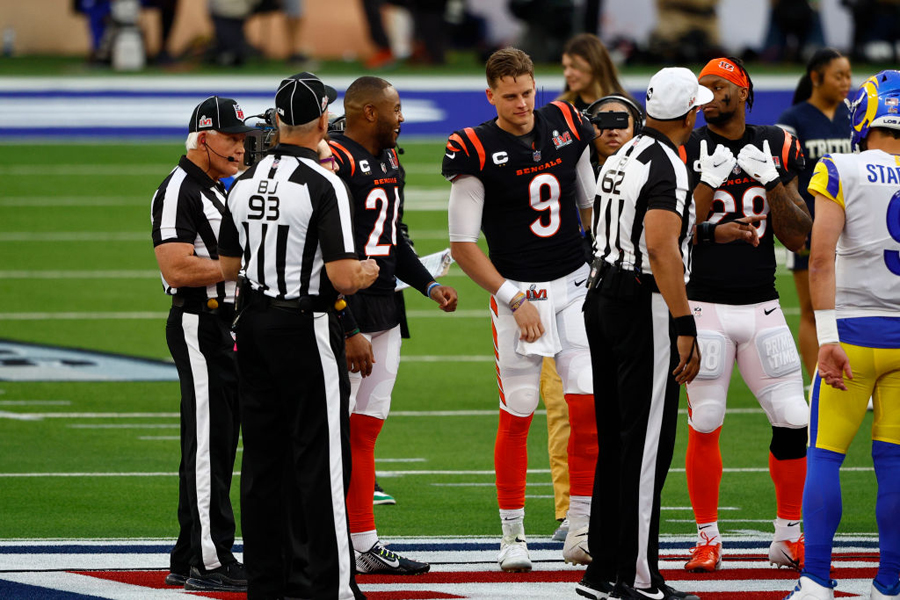Analysis: Super Bowl Could Kick Off Media Measurement Multiverse Mess
How many watched the game? TV industry has a choice

There’s no doubt who won the Super Bowl. One could quibble with some late calls made by the officials, but the scoreboard was clear at the end of the game. The Los Angeles Rams had 23 points, the Cincinnati Bengals had 20.
Similarly, it used to be that the day after the Super Bowl it would be clear how many viewers watched the big game. Nielsen would provide the numbers on Monday. First metered markets, then a fast national, and then last but not least an indisputable final tally that went into the history books.
That number was always huge –- the most watched broadcast of the year. And it was relied on by the networks, the advertisers and the NFL to set rights fees and the ever increasing prices for those clever commercials the whole country would be talking about.
But those days may be going the way of leather helmets and walking off concussions.
For Super Bowl XLI, you’ve got a choice. After a delay, Nielsen on Tuesday said the Super Bowl reached 167 million viewers and drew an average TV audience of 101.1 million viewers, up 5% from the previous year.
But earlier in the day, iSpot.tv, a 10-year-old measurement company working with NBCUniversal, said the big game was watched by 150 million people, with 121 million average viewer minutes..
Who is right?
The smarter way to stay on top of the streaming and OTT industry. Sign up below.
Right now, Nielsen is still the predominant currency used for buying and selling ads. But in the future, if you’re NBC, do you pick the biggest number and use it to show sponsors what a good buy the Super Bowl was?
If you’re Nielsen and you spent most of last year dealing with your biggest customers complaining that you had undercounted viewing during the pandemic, can you afford to show up with a smaller number than iSpot?
There are lots of reasons why different companies come up with different numbers for a single broadcast.
For one thing, Nielsen depends mainly on its panel of 40,000 to 50,000 homes wired to meters to see how many people are watching TV shows –- a system that worked fine when there were three networks, or maybe even when 100 million homes were hooked up to cable.
iSpot relies primarily on data coming from millions of smart TV sets. Its Super Bowl numbers ran across platforms and included more than 15 million people who streamed the game. iSpot also measured viewing on a second-by-second basis and measured both the game and the individual commercials.
Nielsen is working on its new system, Nielsen One, which it said will draw more on big data and provide comparable data for viewing regardless of where or how content is consumed.
The situation is likely to get more complicated. Amid changing technology and errors by Nielsen, the TV industry is clamoring for alternatives to the long-time Nielsen monopoly.
In addition to iSpot, NBCU is looking at six measurement companies who have proposed that they can provide cross-screen audience measurement that can be used to buy and sell ads. In the future, we could get differing numbers for the Super Bowl, The Oscars, Big Brother and Nightline from Nielsen, iSpot, Comscore, VideoAmp, Oracle, 605, Samba TV and TVSquared.
The networks and media buyers say they want choice. They might get chaos. Ultimately it will come down to trust. As the media business becomes more complicated, the winner will be one best able to provide data that is reliable and comes quickiy enough to keep pace with the speed of business.
The players are taking the field and a new game is about to start. ■
Jon has been business editor of Broadcasting+Cable since 2010. He focuses on revenue-generating activities, including advertising and distribution, as well as executive intrigue and merger and acquisition activity. Just about any story is fair game, if a dollar sign can make its way into the article. Before B+C, Jon covered the industry for TVWeek, Cable World, Electronic Media, Advertising Age and The New York Post. A native New Yorker, Jon is hiding in plain sight in the suburbs of Chicago.

